Ahead of Pride, UW’s Manish Chalana describes the changing neighborhood of Capitol Hill
https://www.washington.edu/news/2021/06/23/ahead-of-pride-uws-manish-chalana-describes-the-changing-neighborhood-of-capitol-hill/
https://www.washington.edu/news/2021/06/23/ahead-of-pride-uws-manish-chalana-describes-the-changing-neighborhood-of-capitol-hill/
Jamilah Williams, Assistant Director for Marketing & Communications sat down with Master of Infrastructure Planning & Management (MIPM) graduate, Mike Stevenson, to hear about how the MIPM program has helped his career aspirations.
Tell me a bit about your background.
M: I have a Bachelor of Science in electrical engineering from the University of Colorado and I recently joined the Department of Energy (DOE), Office of Indian
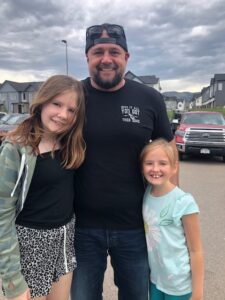
Energy at the National Renewable Energy Lab in Golden, CO. Before joining the DOE I was with the Department of the Interior (DOI) for about six and a half years, almost five of those as a federal employee. My role there was working with federally recognized American Indian tribes. Through grant programs, I helped tribes assess their resources for new energy development. We did both conventional and renewable energy, but I was heavily involved with the renewable energy
group. I also worked on another grant program that helps tribes build their capacity to manage energy projects. Primarily, I helped tribes assess the resources to potentially develop micro grid projects and also helped them assess their potential for forming tribal utility authorities and taking over all of the energy services within their reservation.
Through the results of these grant programs, we estimate that tribes are paying anywhere from $1 to $3 billion a year on energy, with a lot of that going to third-party energy providers that may or may not have the tribe’s best interest in mind. Tribes have a real opportunity to exercise their sovereignty and take over those energy services on their land.
When I was with the Bureau of Indian Affairs with the DOI, it was front-end feasibility work. The Masters in Infrastructure Planning and Management (MIPM) degree I’m receiving from UW helped me get the new position with the DOE Office of Indian Energy, where I will help work on grants that build out energy infrastructure for tribes, helping them to lower the cost of energy on their reservations. What I’ve learned in this degree program is going to enhance my skills and abilities with the DOE to be able to get funding to the tribes and be able to have an impact by helping build these renewable energy systems.
How did you get into this work?
M: Through a job fair actually. I didn’t have any experience working with tribes until I found the Bureau of Indian Affairs office at a Colorado University job fair. I was working the night shift as a can-line specialist for Miller Coors and went to a job fair randomly. It’s been a dream come true
What do you enjoy about this work?
M: I feel like I’m able to have a very small part in enacting real change in people’s lives. Many of the people that I’ve had the pleasure of visiting and working with spend half or more of their income heating and electrifying their homes. We’re dealing with challenging problems, but reducing this burden for people makes it really rewarding work.
How did you decide you wanted to do the MIPM program?
M: The MIPM program is the third graduate program that I’ve started, and the first one that I will have completed. This program felt out of my comfort zone. I have an electrical engineering undergraduate degree. I recognized that the planning component was where I was short on skills and abilities. I liked the challenge of it all. When I found it online, I was immediately drawn to it and thought that it would serve me, because at that point, long term I really wanted to develop energy projects in Alaska. There’s such a need because there are so many isolated communities with very few interconnections and having that basis to help build out electrical infrastructure, I thought was something I was missing in my skill sets.
I started at Denver University for a project management masters, but felt I already knew a lot of what was being taught. Then I tried an energy and sustainability program that was much the same way and then when I saw the University of Washington program, it seemed like the only program of its kind. I thought it was something that would be great education for my career aspirations moving forward.
What did you like most about the MIPM program?
M: I liked the approachability of the instructors and the understanding nature of the instructors. I’m working full time and I have elementary school age kids that as a single parent trying to navigate COVID and school, there were times when there simply wasn’t enough time in the day to get everything done. The instructors were very supportive of my situation and were committed to working with me to ensure that I was successful in this program. I am forever grateful for their flexibility and dedication.
I also liked the diversity of the program material, everything from energy systems to water systems to emergency management. I thought it set a very good foundation and covered a broad range of interests for people that are looking to hone their skills. I appreciated the fact that it covered so many different areas.
Have there been any changes at the Department of the Interior with the appointment of Secretary Deb Haaland?
M: It’s very long overdue to have an Indigenous person in that position when such a major component of the federal trust responsibility of the Department of the Interior is maintaining government to government relationships with tribes. I do think that there’s going to be more money for renewable energy projects and my expectation is that it’s going to benefit more tribes.
How has this program helped you switch careers?
M: The support of the advisors and also my capstone played a large part in this. My capstone focuses on how tribes in northern California can develop micro grids to add resilience for the public safety power shut off events. It ties into the tribe’s sovereign ability to develop their own policies and regulations to bypass some of the legislation in California that makes development difficult. If I get this capstone right, it could be something to use as a roadmap for tribes to develop some resilient systems. The basis for a lot of the classes I was in helped set the foundation for some of the programs and models I’m using in the capstone. This will probably be the biggest achievement I have in the degree program and something that hopefully will make a meaningful impact.
Did you have any mentors in the program that were influential or outside of the MIPM program?
M: There’s a lot of remarkable people completing this program and we all have vastly different life experiences. The instructors are amazing too. I don’t know that there’s any one single person that’s inspired me more than the others, but collectively, the group as a whole is an impressive group of people.
Do you enjoy working for the public service sector or could you see yourself moving back to the private sector?
M: Wherever I feel like I can make the biggest impact is where I’ll be and I hope it’s with the Department of Energy for a long time.
What’s next for you?
M: I’m just excited for the opportunity to use what I’ve learned in this degree in my new position to be able to better manage the grants I’m associated with and ensure that taxpayer dollars are utilized effectively and hopefully to make a real, impactful difference in people’s lives and lessen the burden they face to heat and electrify their homes. I’m looking forward to the opportunity to grow and develop and be out of my comfort zone.
Many of the world’s major cities have implemented tree planting programs based on assumed environmental and social benefits of urban forests. Recent studies have increasingly tested these assumptions and provide empirical evidence for the contributions of tree planting programs, as well as their feasibility and limits, for solving or mitigating urban environmental and social issues.
Click below to read more of this perspective paper co authored by UDP Professor Marina Alberti
https://www.frontiersin.org/articles/10.3389/fevo.2021.603757/full
Join CEDEUS (Centre of Urban Sustainable Development) of the Pontificia Universidad Católica de Chile in Santiago on March 9 at 10:00am PST for an International Webinar | “Urban Sustainability in an Eco-Evolutionary Perspective” a talk with Marina Alberti , to be held on March 9 at 3:00 p.m. (Chile). The talk will be broadcast through the Youtube channel of the Institute of Urban and Territorial Studies , and the IEUT academic, Carolina Rojas , will moderate.
March 9 (previously scheduled for Jan 12) 3:00 p.m. (Chile) which will be 10:00 am. PST
More info on their website here
Associate Professor Manish Chalana has a book coming out at the end of the month:
Heritage Conservation in Postcolonial India
Approaches and Challenges
Edited By Manish Chalana, Ashima Krishna
Copyright Year 2021
Heritage Conservation in Postcolonial India seeks to position the conservation profession within historical, theoretical, and methodological frames to demonstrate how the field has evolved in the postcolonial decades and follow its various trajectories in research, education, advocacy, and practice.
Click Here for more information
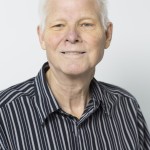
Dr. Bob Mugerauer has completed work that brings to fruition much of his research conducted over the last ten years on health, and well-being. Specifically, problems concerning decision-making in the professions cover not only the environmental disciplines and practices but also health care and medical clinical practice. Joining many European and American physicians and nurses—especially a group of Scandinavian nurses—recent work conceptually clarifies and critiques excessive claims of positivistic medicine that would minimize the roles of judgment and experiential understanding.
His forthcoming essays will appear in the major Journal of Evaluation in Clinical Practice in three parts. The editors have made an unprecedented decision to publish the 30,000 word document in successive issues: Professional Judgment in Clinical Practice: part 1: recovering original, moderate evidence-based health care; part 2: Knowledge into Practice; part 3: a better alternative to strong Evidence-Based Medicine. The work has been triple refereed, with a final editorial evaluation as “being a strongoverview of the debates and a significant contribution to the literature.”
Congruent with this, he has been elected a “Distinguished Fellow” to the UK Society for Person-Centered Healthcare. This brings an invitation to publish next work in the European Journal for Person Centered Healthcare” and participate actively in the Society’s Conferences.
UDP professions council fall lecture with Gil Kelley
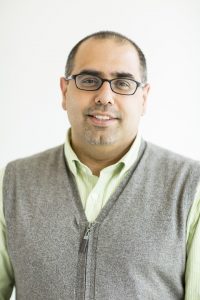
Dr. Himanshu Grover’s research lands at the intersection of land use planning, community resilience, and climate change. Dr. Grover is also the co-Director of the Institute for Hazard Mitigation and Planning at the College of Built Environments. His research emphasizes place-based planning policies to balance economic, environmental, and social priorities to achieve equitable development and enhance community resilience.
“The same amount of money that you spent, let’s say, for building your capacity to provide a specific kind of risk communication through your social media platform, can be used for floods, for earthquakes, for terrorist attacks or for epidemics.”
In 2019, America with Kerala: Uniting for a Disaster Resilient Kerala, a joint project organized by the U.S. Consulate General in Chennai, the Centre for Public Policy Research (CPPR) in Kochi, and the Kerala State Disaster Management Authority (KSDMA) took place in response to disastrous floods and landslides that devastated Kerala, India. Dr. Grover participated in the project serving as the U.S. subject matter expert. He delivered the keynote address in which he shared the American experience in disaster management, and how it can inform Disaster Management in India. One of his key messages was to adopt an “All Hazards Approach” as a framework for risk reduction. Additionally, he highlighted the need for knowledge building and training at all levels to increase awareness about local hazard threats.
One product of the project was a community resilience resource guide for disaster preparedness that was released late fall of 2020. The guide includes input from community leaders who led disaster response efforts during the 2018 and 2019 floods and landslides in Kerala, as well as U.S. and Indian subject matter experts and other expert sources.
Following the launch of the community resilience handbook, Dr. Himanshu Grover also participated as an expert panelist by the US Consulate in Chennai. This online event had an attendance of more than 500 people internationally. The November 2020 panel, moderated by Dr. D. Dhanuraj, CPPR Chairman, included speakers Dr. Muralee Thummarukudy, Chief of Disaster Risk Reduction, United Nations Environment Programme (UNEP); Dr. Himanshu Grover, co-director, Institute for Hazard Mitigation and Planning, College of Built Environments, University of Washington; Dr. Nivedita P. Haran, IAS (Retired), Honorary Chairperson, Board of Directors, Centre for Migration and Inclusive Development, Kerala; and Dr. Shekhar L. Kuriakose, Member Secretary, Kerala State Disaster Management Authority.
As a follow-up to the 2019 initiative, U.S. State Department, through U.S. Consulate General in Chennai, asked Dr. Grover to develop a Disaster Management Curriculum for a new, 40-hour elective course to be incorporated into existing academic programs in universities, autonomous colleges, and other relevant governmental and non-governmental agencies across India. After developing the curriculum, Dr. Grover will visit India on a speaking tour to promote the curriculum among relevant institutions. This American/internationally approved curriculum will help develop regional expertise in disaster management; promote academic collaboration between Indian and U.S. institutions in this area and highlight opportunities to attract students and practitioners across India to seek higher studies in this field in the United States. Dr. Grover anticipates that his initiative will establish the College of Built Environments as a leader in disaster management education. He hopes this collaboration will result in establishing partnerships with reputed Indian educational institutions and professional bodies which will lead to increased opportunities for student recruitment as well as placements for our graduates.
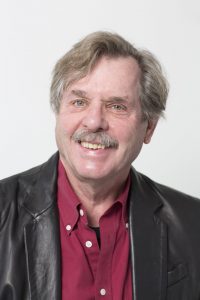
Bob Freitag is actively involved in exploring how storytelling can help communities address difficult emotionally charged topics. Opportunities available through storytelling is described in a published in the Story telling Freitag et al JEM. He published a follow up article that actually tells a story, “showings” how threaten community residents address climate change. Bob is currently write a screen play, again showing, how a participate let process using storytelling.
Almost everyone can relate to the experience of telling a story. This article explores how storytelling is being used to identify risks and create hazard mitigation strategies, as well as how it can promote learning within the field of emergency management. Storytelling is both a pedagogical tool and an invaluable resource for practicing emergency managers. This article illustrates the ways in which the process of telling a story enables participates to talk about stressful concerns, internalize complex concepts, and even have fun. The article explores how storytelling drove the public process leading to the adoption of hazard mitigation plans, and how eight types of stories, as defined by the American humorist Kurt Vonnegut, can strengthen emergency management education. This article also explores how research suggests that storytelling can provide an effective way for both the tellers of story and their listeners to find meaning in events, provide context to what is being taught, transmit emotion along with information, develop a professional identity, build empathy and compassion, and help with remembering events and lessons learned. The authors have a long history of utilizing storytelling and present this article in order to share and explore storytelling as applied to the discipline of emergency management.
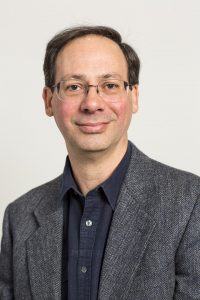
Dr. Dan Abramson co- edited a Special Issue of Natural Hazards (Springer): Lessons Learned from post-2008 Wenchuan Earthquake Community Recovery
“In it, we sought to highlight recent scholarship that reflects on the quality of community-level recovery and community planning processes following one of the largest natural disasters in modern times, which significantly affected one of the world’s great economies. During the first few years following the earthquake, most of the scholarship tended to be descriptive, emphasizing the process of rapid physical reconstruction. In subsequent years, more thoughtful scholarship has begun to emerge regarding community aspects of the recovery process, but little of this has been available to international audiences. This collection of papers is our attempt to help address this need.” – Rob Olshansky